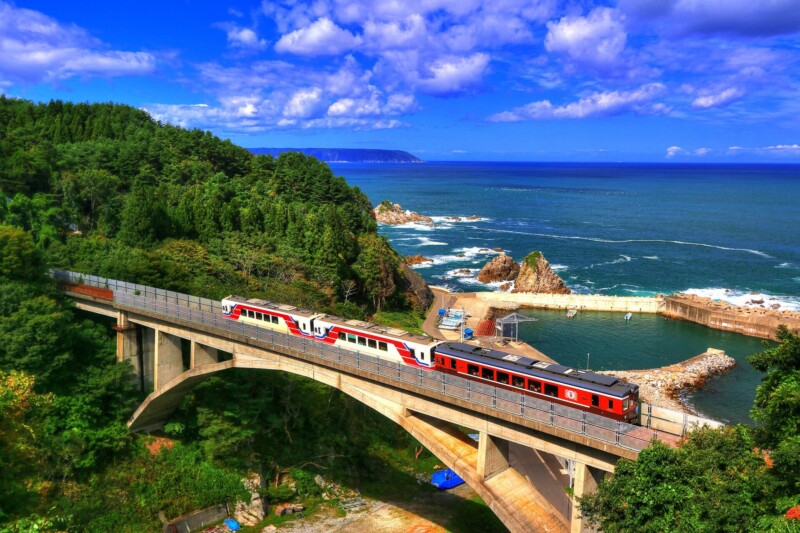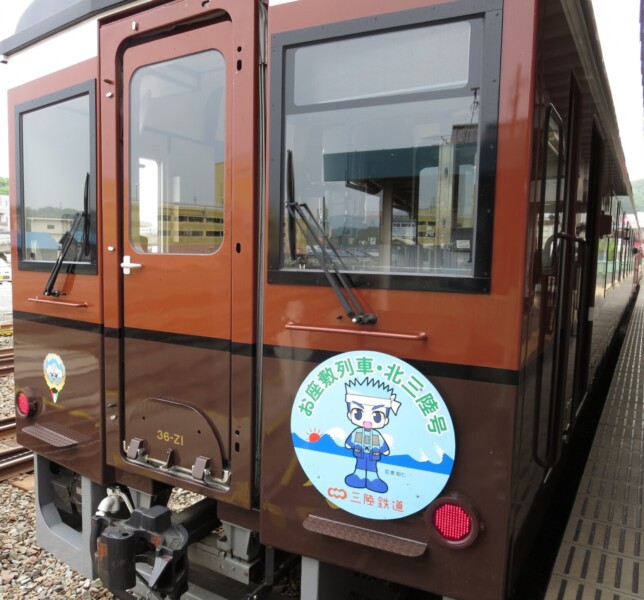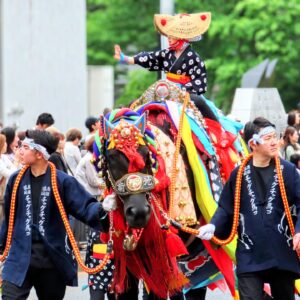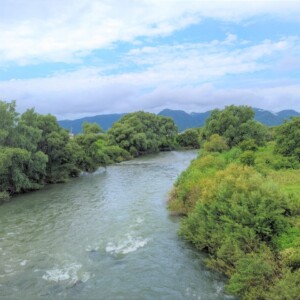
3 recommended local railway routes in Iwate Prefecture! A railway of hope that will overcome the earthquake.
table of contents
- 1 What is the definition of local line?
- 2 Sanriku Railway Rias Line (Sakari Station - Kuji Station: 41 stations 163.0km)
- 3 Recommended points for Sanriku Railway Rias Line!
- 4 JR Yamada Line (Morioka Station - Miyako Station: 16 stations 102.1km)
- 5 Recommended points on the Yamada Line!
- 6 JR Kamaishi Line (Hanamaki Station - Kamaishi Station: 24 stations 90.2km)
- 7 Recommended points on the Kamaishi Line!
- 8 Other Iwate local lines
- 9 summary
- 10 Tohoku Region Local Line Series
Tohoku is a treasure trove of local lines, but Iwate Prefecture has many lines that are especially worth riding.
It is a treasure trove of attractive local lines, including lines along the coast that have been reconstructed from the Great Earthquake and lines that run through remote mountains.
What is the definition of local line?
In a broader sense, it refers to regional railway lines with few passengers, but here we selected them based on the following criteria.
- Single track with few passengers, high possibility of closure
- There are steam locomotive trains and sightseeing trains, and there are many spots for great photos.
In addition, routes that span two prefectures are considered local lines of the prefecture where the route starts.
Sanriku Railway Rias Line (Sakari Station - Kuji Station: 41 stations 163.0km)
The Sanriku Railway Rias Line, commonly known as Santetsu , is the longest third sector railway in Japan, appearing in the 2013 NHK TV drama series Ama-chan the Northern Railway

It used to be divided into the Northern Rias Line between Miyako and Kuji, and the Southern Rias Line between Kamaishi and Sakari, but in 2019, the Miyako-Kamaishi section of the Yamada Line was transferred from JR and became the current Rias Line. Ta.
We are working hard to survive disasters such as the Great Earthquake, such as by planning sightseeing trains that take advantage of the scenic spots along the Sanriku Coast.
Recommended points for Sanriku Railway Rias Line!
Because it is a ria coastline, there are many tunnels, and there are sections that run inland, so you can enjoy the changing scenery from the train window.
Osawa Bridge and Akka River Bridge

The Osawa Bridge between Horiuchi and Shirai Kaigan and the Yasuegawa Bridge between Noda Tamagawa and Horiuchi are both scenic spots where you can see the horizon of the Pacific Ocean from high up, and during the daytime you can stop on the bridge and enjoy the spectacular view. I'll give it to you.
Koishihama Station
As the name suggests, Koishihama Station is a place that people who wish to find fulfillment in love should visit.

When the station first opened in 1985, it was called Koishihama Station, but in 2009 the name was changed to Koishihama Station
Tatami train “Kitasanriku”
Santetsu's event trains with various designs are gaining popularity.

The tatami train, which runs on weekends and holidays, is a tatami-floored train with a four-seater table, and transforms into kotatsu train
In addition, various sightseeing trains are planned, including a train where you can enjoy lunch and sweets, and a night train where you can enjoy the sunrise over the Pacific Ocean.
Tatami train “Kitasanriku” <Information>
- Event train: Tatami train “Kitasanriku”
- Period: Weekends and holidays from April to October
- Phone number: 0193-62-8900 (Sanriku Railway Passenger Service Department)
- URL: Sanriku Railway Co., Ltd.
JR Yamada Line (Morioka Station - Miyako Station: 16 stations 102.1km)
Originally, the line ran to Kamaishi Station, but the section between Miyako and Kamaishi, which was destroyed in the Great Earthquake, was transferred to Sanriku Railway, making the line approximately 102km long.

It is a deficit route that has few long-distance passengers and is proposed to be abolished every year. The line name comes from Yamada Station beyond Miyako, but after being transferred to Santetsu, only the name remained.
Recommended points on the Yamada Line!
one of the most unexplored routes in the Tohoku region , running through the deep mountains where you can't feel any human activity . You can often see wild animals from the train window and enjoy Iwate's untouched nature from the train window.
Sanriku Train Miyako

The train makes one round trip a day between Morioka and Miyako, leaving Morioka Station and running through a residential area to Kamiyonai Station, but eventually heading deep into the mountains, which feels like an unexplored region.
The recommended season is the fall foliage season, when you can ride through the river while the bright reds and yellows of the mountains shine.
Weeping cherry blossoms in Yonai (Kamiyonai Station)

is the Yonai Water Purification Plant, the oldest in Morioka City, completed in 1934
From late April to May, the Yaebenishidare Higanzakura cherry blossoms are in full bloom here, and many cherry blossom viewing visitors come to see the weeping cherry blossoms.
Yonai Water Purification Plant <Information>
- Facility name: Yonai water purification plant
- Address: 49 Nakai, Kamimenai, Morioka City
- Phone number: 019-623-1411 (Morioka City Water Supply and Sewerage Bureau Management Planning Division Planning Section)
- URL: Cherry blossoms at Yonai Water Purification Plant
Google Map
Iwaizumi Line abandoned line ruins (Shigeichi Station)
Opposite the platform of Moichi Station in Miyako City, there are the remains of a deserted platform and an abandoned railway line. the ruins of the Iwaizumi Line that connected Shigeichi Station and Iwaizumi Station, which was abolished in 2014 .

The line, which carries around 20 passengers on three round trips a day, was in the red, and was discontinued after a derailment caused by a landslide.
a treasure trove of "unexplored stations," Oshikado Station in particular was loved by unexplored station enthusiasts.
JR Kamaishi Line (Hanamaki Station - Kamaishi Station: 24 stations 90.2km)

The line is modeled after Kenji Miyazawa's ``Night on the Galactic Railway,'' the ``Galaxy Dreamline Kamaishi Line .'' It connects Kamaishi, the iron town, from Hanamaki, which is associated with Kenji, through Tono, the town of folk tales and kappa.
Although it is a local line, it is an important line in the local area as it is directly connected to Shin-Hanamaki Station on the Tohoku Shinkansen and connects Hanamaki City.
Recommended points on the Kamaishi Line!
All stations have been given nicknames in Esperanto, the language used by Kenji Miyazawa, and these are written on the station name signs.
Hanamaki Station has "Ĉielarko (Rainbow) ," Tono Station has "Folkloro (Folklore) ," Kamaishi Station has "La Oceano (Ocean)," and it's fun to look around. .
SL Galaxy

The steam locomotive C58 239, which was preserved in a park in Morioka City, has been restored to its working condition and is a popular 4-car sightseeing steam locomotive train that runs one round trip every two days.
However, due to the aging of the passenger cars, service has ended with the temporary final service on June 11, 2023.
Miyamori River Bridge (Miyamori Station)

Also known as Megane Bridge, it is a beautiful five-arch bridge that was completed in 1943 and is approximately 107m long and 17m high.
the SL Ginga cross the roadside station ``Miyamori'' and enjoy the atmosphere of the ``Galaxy Railway.''
Miyamori River Bridge<Information>
- Facility name: Miyamori River Bridge
- Address: 30-37-1 Shimomiyamori, Miyamori-cho, Tono City, Iwate Prefecture
- Phone number: 0198-67-2929 (Roadside Station Miyamori)
- URL: Miyamori Bridge (Megane Bridge )
Google Map
Other Iwate local lines
JR has two local routes. The Tohoku Main Line and the IGR Iwate Galaxy Railway in Sector 3 are double-tracked, so they have been excluded based on this standard.
JR Hanawa Line (Koma Station - Odate Station: 27 stations 106.9km)
The train runs from Morioka Station, but the route to Koma Station is on the IGR Iwate Galaxy Railway.

Crossing the prefectural border to Odate Station in Akita Prefecture, you can enjoy the seasonal scenery of the mountains, as the line is nicknamed the ``Towada Hachimantai Shikisai Line.''
JR Kitakami Line (Kitakami Station - Yokote Station: 15 stations 61.1km)

This is also a peaceful route that crosses the Akita prefecture border to Yokote, which is famous for its snowy ``Kamakura''.

Soothe your eyes at Lake Kinshu, where the autumn leaves shine, and soothe your body with a soak in the hot springs at Hottoyuda Station
summary
Most of the local lines in Iwate Prefecture are in the red, and there is a strong possibility that they will be abolished following the Iwaizumi line, or converted to BRT buses like the Ofunato line.
I would like to preserve railways, which are an important means of transportation for locals and provide a sense of travel that buses cannot offer, into the future as much as possible.










![The specialty of Genbikei, "Flying Dango," is definitely worth a visit! Delicious activities! [Ichinoseki City, Iwate Prefecture] Genbikei bus stop](https://jp.neft.asia/wp-content/uploads/2017/04/IMG_5931-150x150.jpg)
![Bottle Don is the definitive Sanriku souvenir that looks delicious! [Iwate Prefecture] Bottle don (abalone, scallop, salmon roe)](https://jp.neft.asia/wp-content/uploads/2023/06/IMG_5048-150x150.jpg)
![Ryusen-no-no-no-no-no-no-no-no-no-no-no-no-no-no-no-no-no-no-no-no-no-no-no-no-no-no-no-no-no-no-no-no-no-no-no-no-no-no-no-no-no-no-no-no-no-no-no-no-no-no-no-no-no-no-no-no-no-no-no-no-no-no-no-no-no-no-no-no-no-no-no-no-no-no-no-no-no-no-no-no-no-no-no-no-no-no-no-no-no-no-no-no-no-no-no-no-no-no-no-no-no-no-no-no-no-no-no-no-no-no-no-no-no-no-no-no-no-no-no-no-no-no-no-no-no-no-no-no-no-no-no-no-no-no-no-no-no-no-no-no-no-no-no-no-no-no-no-no-no-no-no-no-no-no-no-no-no-no-no-no-no-no-no-no-no-no-no-no-no-no-no-no-no-no-no-no-no-no-no-no-no-no-no-no-no-no-no-no-no-no-no-no-no-no-no-no-no-no-no-no-no-no-no-no-no-no-no-no-no-no-no-no-no-no-no-no-no-no-no-no-no-no-no-no-no-no-no-no-no-no-no-no-no-no-no-no-no-no-no-no-no-no-no-no-no-no-no-no-no-no-no-no-no-no- [Iwate Prefecture] Ryusendo Cave (first underground lake)](https://jp.neft.asia/wp-content/uploads/2023/07/PXL_20230512_052246926.NIGHT_-150x150.jpg)
![[Series ②: The role of the previous nine years and the role of the second three years] The role of the previous nine years is from the truce to the battle again, and the Kokufu army is struggling Taga Castle Ruins](https://jp.neft.asia/wp-content/uploads/2023/11/a0b8b1213124e7a13c7308fa81e053a2-150x150.jpg)
![[Iwate Prefecture] Soft-serve ice cream with sake, miso and wasabi flavor! Why are the soft serve ice cream eaten at roadside stations so delicious? There's also school lunches! Iwate Prefecture Catch](https://jp.neft.asia/wp-content/uploads/2025/06/915fd0ce722ab0f21e74864401170847-150x150.jpg)













